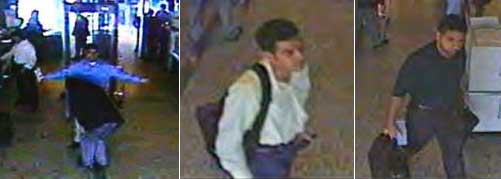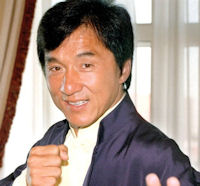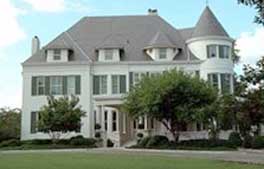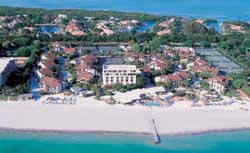 Hijackers in a Dulles Airport, Washington, security checkpoint, from left to right: Nawaf Alhazmi gets searched, Khalid Almihdhar, and Hani Hanjour. [Source: FBI] | Around 7:15 a.m., Flight 77 hijackers Majed Moqed and Khalid Almihdhar check in at the American Airlines ticket counter at Washington's Dulles International Airport. (9/11 Commission 7/24/2004, pp. 2-3; 9/11 Commission 8/26/2004, pp. 27) The FAA has a computer system in place, called CAPPS, which identifies those passengers most likely requiring additional scrutiny by airport security (see (6:20 a.m.-7:48 a.m.) September 11, 2001). CAPPS selects both men, but the only consequence is that Moqed's luggage is not loaded onto Flight 77 until after his boarding is confirmed. (9/11 Commission 1/27/2004; 9/11 Commission 8/26/2004, pp. 27-28) Dulles Airport has surveillance cameras monitoring its security checkpoints, and video later viewed by the 9/11 Commission shows the two passing through the Main Terminal's west security screening checkpoint at 7:18 a.m. |
When they go through, their carry-on bags fail to set off any alarms, but both men set off the alarm when they pass through the first metal detector. They are directed to a second metal detector, where Almihdhar passes, but Moqed fails again. He is subjected to a personal screening with a metal detection hand wand. This time he is cleared and permitted to pass through the checkpoint. (9/11 Commission 1/27/2004; 9/11 Commission 7/24/2004, pp. 3) The other three Flight 77 hijackers pass through the security checkpoint about 20 minutes later (see (7:25 a.m.-7:36 a.m.) September 11, 2001). The 9/11 Commission later concludes that Almihdhar's passport was "suspicious" and could have been linked to al-Qaeda, but it does not explain why or how. (Sullivan 1/27/2004) |




